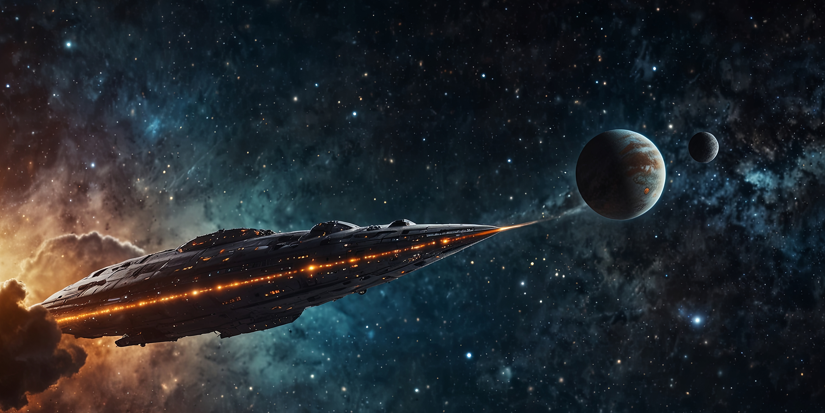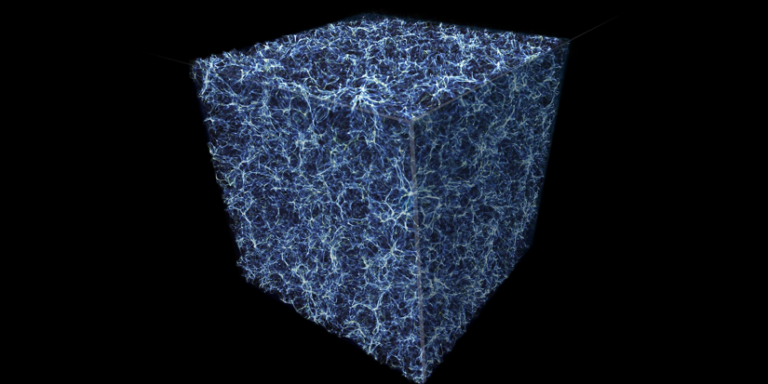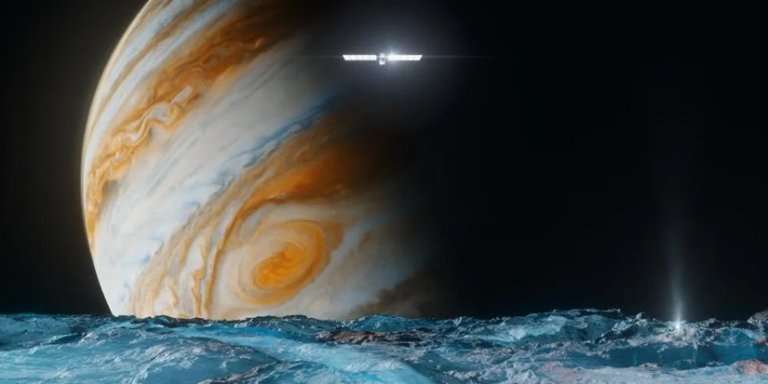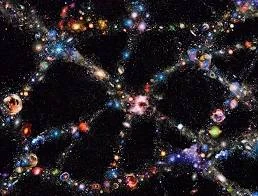
When we think about the observations made that build the very foundations of the universe, many theories arise about its beginnings. Superstructures observed such as the BOSS Great Wall for example, make us question whether or not there is an intricate base structure holding everything together. Once such idea is the Cosmic Web Theory.
This theory represents a remarkable advancement in our comprehension of the cosmos, revealing a complex, intricate web that connects galaxies, galaxy clusters, and dark matter across the universe. In this exploration, we will delve deep into the Cosmic Web Theory, its historical origins, the fundamental principles that underpin it, its significance in contemporary cosmology, and the exciting avenues of research it has opened.
Historical Origins and Background
The roots of the Cosmic Web Theory can be traced back to the early 20th century when astronomers began to study the distribution of galaxies in the observable universe. At that time, it was widely believed that galaxies were distributed uniformly throughout space. This notion was encapsulated in the “Cosmological Principle,” which posits that the universe is homogenous and isotropic on large scales. In simpler terms, it means that, on average, the universe looks the same from every vantage point and in every direction.
However, as observational techniques and instruments improved, astronomers started to notice deviations from this uniform distribution. Pioneers in the field like Edwin Hubble and Fritz Zwicky observed that galaxies tended to clump together in groups and clusters. The realization that galaxies were not randomly scattered in space challenged the prevailing cosmological paradigm and laid the groundwork for the development of the Cosmic Web Theory.
The Cosmic Web’s Fundamental Principles
1. Dark Matter’s Dominance: One of the foundational principles of the Cosmic Web Theory is the central role of dark matter. Dark matter is a mysterious, invisible substance that makes up a significant portion of the universe’s mass. While it doesn’t emit, absorb, or reflect light, its gravitational influence is profound. Dark matter acts as the gravitational scaffolding upon which the cosmic web is built. It draws ordinary matter (atoms, ions, and molecules) towards it, resulting in the formation of galaxies and galaxy clusters along dense filaments.
2. Large-Scale Structure Formation: The cosmic web is essentially a reflection of the universe’s evolution over billions of years. It all begins with tiny density fluctuations in the early universe, imprinted in the cosmic microwave background radiation. Under the influence of gravity, these fluctuations grow and evolve, leading to the formation of structures on various scales. Over time, matter condenses along the densest regions, forming filaments and clusters, while voids emerge in the sparser regions.
3. Galaxy Distribution: Within the framework of the Cosmic Web Theory, galaxies are not randomly distributed. Instead, they are concentrated along the filaments of the cosmic web. These filaments serve as cosmic highways, guiding galaxies towards one another. The intersections of filaments often give rise to superclusters—massive conglomerations of galaxies and galaxy clusters.
4. Voids: Cosmic voids are essential components of the cosmic web. These are vast, nearly empty regions that separate the filaments and superclusters. Voids can span hundreds of millions of light-years and are integral to the overall structure of the universe. Their existence provides valuable insights into the large-scale distribution of matter.
The Role of Observations and Simulations
To develop and validate the Cosmic Web Theory, astronomers have relied on a combination of observations and simulations. Advanced telescopes and survey projects, such as the Sloan Digital Sky Survey (SDSS) and the Planck satellite mission, have played a pivotal role in mapping the distribution of galaxies and dark matter on cosmic scales.
Observations have revealed the telltale signs of the cosmic web, including the arrangement of galaxies along filaments and the vast cosmic voids. The exquisite precision of these observations has allowed cosmologists to test and refine their theories.
However, understanding the cosmic web’s formation and evolution over billions of years requires more than just observations. It necessitates the use of large-scale computer simulations. These simulations incorporate the laws of physics, particularly gravity, and model the universe’s evolution from its early moments to the present day. They have successfully reproduced the observed large-scale structure of the universe, confirming the predictions of the Cosmic Web Theory.
Cosmic Microwave Background Radiation
One of the most remarkable achievements in modern cosmology that complements the Cosmic Web Theory is the study of the cosmic microwave background (CMB) radiation. The CMB is a faint glow of microwave radiation that permeates the universe. It is a relic from the early universe, dating back to about 380,000 years after the Big Bang.
The Cosmic Web Theory aligns harmoniously with the CMB’s characteristics. The CMB exhibits tiny temperature fluctuations, known as anisotropies, which are the seeds of future cosmic structure. These anisotropies are directly related to the density fluctuations in the early universe, which, under the influence of gravity, ultimately led to the formation of galaxies, galaxy clusters, and the cosmic web itself.
The exquisite measurements of the CMB by instruments like the Planck satellite have provided cosmologists with a wealth of data, allowing them to precisely map the early density fluctuations and refine their understanding of the cosmic web’s formation.
The Significance of the Cosmic Web Theory
The Cosmic Web Theory is of immense significance in the field of cosmology for several reasons:
1. Understanding the Universe’s Evolution: It offers a comprehensive framework for comprehending the universe’s evolution, from its early moments to the present day. By tracing the development of the cosmic web, cosmologists can gain insights into the growth and evolution of structures in the cosmos.
2. Dark Matter Mysteries: The theory’s reliance on dark matter makes it a key player in the quest to understand this enigmatic substance. While dark matter remains elusive to direct detection, its gravitational influence on the cosmic web provides vital clues about its nature.
3. Testing Cosmological Models: The Cosmic Web Theory provides a robust platform for testing and refining various cosmological models. By comparing observations to simulations based on different cosmological parameters, scientists can discern which models best align with the real universe.
4. Cosmic Web as a Scientific Tool: The cosmic web acts as a natural laboratory for studying astrophysical phenomena, such as galaxy formation and the interplay between dark matter and visible matter. It serves as a valuable tool for exploring the universe’s fundamental physics.
5. Cosmic Evolution: Understanding the cosmic web’s evolution over time enables scientists to make predictions about the universe’s future. It sheds light on the fate of structures like galaxies and galaxy clusters, as well as the expansion of cosmic voids.
The Future of Cosmic Web Research
Cosmic Web research continues to evolve, driven by advancements in technology and the quest for deeper insights into the cosmos. Here are some exciting directions for future research in this field:
1. High-Resolution Surveys: Upcoming survey projects, like the Vera C. Rubin Observatory’s Legacy Survey of Space and Time (LSST), will provide unprecedented high-resolution maps of the cosmic web. These surveys will allow astronomers to probe the cosmic web’s structure with remarkable precision.
2. Dark Matter Particle Searches: The study of the cosmic web will continue to be a powerful tool in the search for dark matter particles. Experiments and observations aimed at detecting or constraining the properties of dark matter will be closely intertwined with cosmic web research.
3. Cosmic Acceleration: Investigating the cosmic web can also shed light on the nature of cosmic acceleration, one of the most intriguing mysteries in cosmology. Understanding how dark energy influences the cosmic web’s evolution could provide clues to this phenomenon.
4. Multi-Messenger Astronomy: Combining observations from different cosmic messengers, such as gravitational waves and high-energy neutrinos, with the study of the cosmic web can offer a holistic view of the universe and its most energetic events.
5. Cosmic Web Beyond Our Universe: As technology and instruments advance, astronomers may explore the cosmic web in other parts of the electromagnetic spectrum, such as X-rays and radio waves. This multi-wavelength approach can uncover new facets of the cosmic web’s structure.
Conclusion
The Cosmic Web Theory stands as a testament to human curiosity and ingenuity in unraveling the mysteries of the universe. From its historical origins to its fundamental principles and its profound implications for modern cosmology, it has reshaped our understanding of the cosmos.
As we peer deeper into the cosmic web and refine our models and observations, we inch closer to deciphering the secrets of the universe’s past, present, and future. The cosmic web continues to beckon, offering a vast and interconnected tapestry of knowledge that promises to expand our horizons and challenge our understanding of the cosmos for generations to come.
- The Black Hole In Interstellar Was Built From Actual Equations

- Astronomers discover the largest structure in the universe
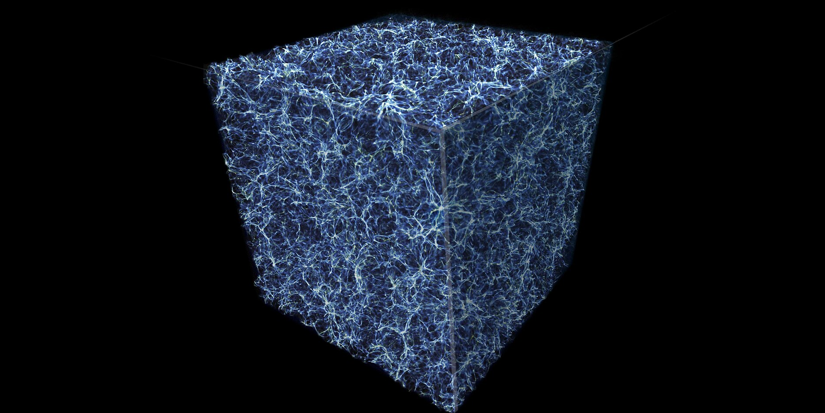
- Russian Plasma Engine Will Get Us To Mars In 30 Days

- How Do We Know There’s an Ocean Beneath Europa’s Surface?
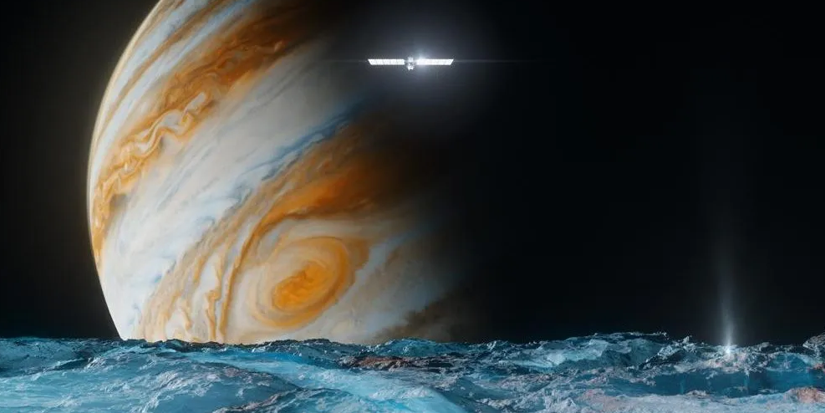
- What is the Turing Test?

- How light beams could propell us to the stars
